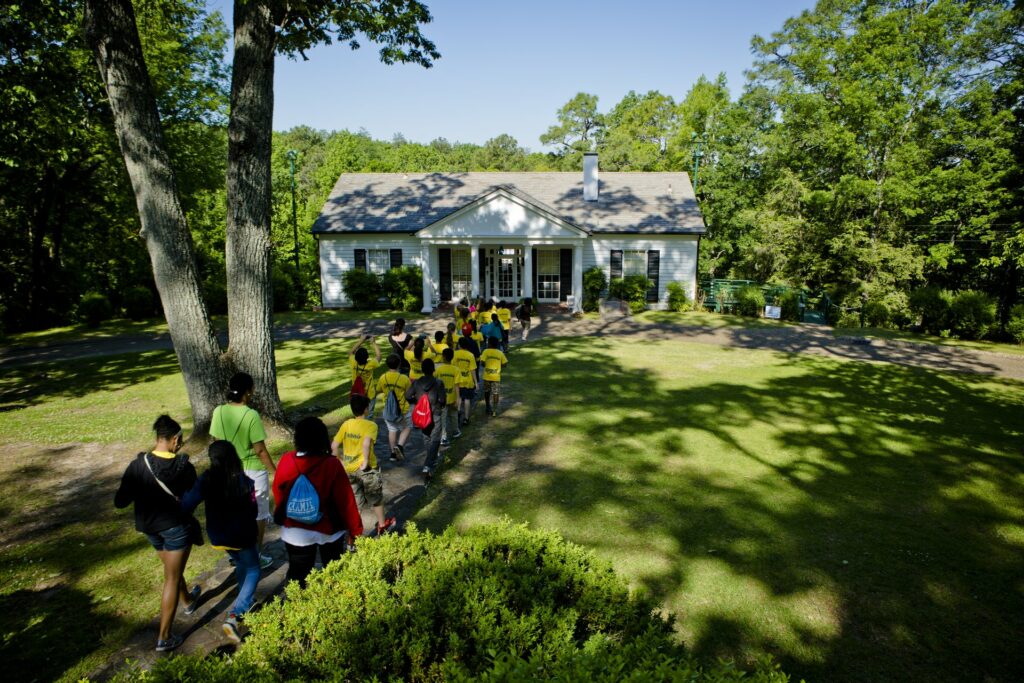Warm Springs (2005), a film developed and produced for cable television by Home Box Office (HBO), focuses on Franklin D. Roosevelt’s experiences from 1921 to 1928, before his election as president of the United States. It chronicles Roosevelt’s time at Warm Springs, in Meriwether County, which he first visited in 1924 after contracting polio three years earlier, at the age of thirty-nine, just as his political career was gaining momentum. The area’s springs, reputed to have healing waters, attracted the future president, who eventually funded a facility there known today as the Roosevelt Warm Springs Institute for Rehabilitation. During his presidency, his home at Warm Springs was dubbed the “Little White House.”
Roosevelt, played in the film by British Shakespearean actor Kenneth Branagh, was a promising politician from a family of great wealth. Warm Springs underscores his early cavalier attitude regarding Democratic Party ideals and also highlights facts that were not publicized during his presidency—namely, that he was paralyzed and required a staff of people to help him cope with everyday activities.
Roosevelt was a vice presidential candidate in 1920, a year before he contracted polio. Seven years passed after his diagnosis before Roosevelt returned to politics as the governor of New York in 1928, and much of that time was spent at Warm Springs. The transformation in Roosevelt’s political attitude during those years is central to the film, which depicts the future president’s first-hand experiences with poverty, illiteracy, prejudice, and racism, all of which were central concerns during his presidency.
Screenwriter Margaret Nagle maintains a focus on Roosevelt’s metamorphosis not only by considering his perspective on suffering but also by drawing on presidential library materials, Roosevelt’s memoirs, and photographs from his years at Warm Springs. A remote area with no running water or paved roads, Warm Springs was a place in which Roosevelt’s paralysis made him feel particularly vulnerable and helpless.
Nagle’s screenplay also focuses on the relationship between Roosevelt and his wife, Eleanor, which changes as a result of his illness. Eleanor, played by Cynthia Nixon, had also suffered greatly in her life, and as a result she was able to connect with her husband through his trials. Roosevelt’s extramarital affair with Lucy Mercer, Eleanor’s social secretary, opens the film and frames the nature of the Roosevelts’ marriage at the time he contracted polio. Although the film does not extensively portray Eleanor’s stays at Warm Springs, it does depict her growth as a public speaker in her husband’s absence.

Courtesy of Explore Georgia.
Warm Springs director Joseph Sargent, like Nagle, strives to emphasize the relationships that made it possible for Roosevelt to overcome his initial sense of loss in contracting polio. He also attempts to reveal the man behind the presidential persona.
Roosevelt’s advisor Louis Howe, played by David Paymer, has an integral role in helping Roosevelt return to the political arena and with involving Eleanor in this process. Roosevelt’s mother, played by Jane Alexander (who played Eleanor in the 1976 television movie Eleanor and Franklin ), is cast as a controlling but resigned mother who desires to hide her son’s polio. Thomas W. Loyless, the Warm Springs manager who becomes a companion to Roosevelt, is played by Tim Blake Nelson, and Helena Mahoney, the physical therapist at Warm Springs, is played by Kathy Bates.
Invoking the historical setting, the film highlights such details as the Bullochville train depot, which serves as the gateway to Warm Springs, and George Foster Peabody’s letter inviting Roosevelt to visit Georgia. The film also uses letters written between Roosevelt and his wife to emphasize what Roosevelt calls “a suffering so insidious, so silent, that it rattles my soul.” Warm Springs ends with Roosevelt back in public life, nominating Al Smith for president at the 1928 Democratic convention.
Warm Springs was filmed in the original cottage where Roosevelt first stayed, and the actual pools Roosevelt used were filled with area mineral water for the filming. The braces worn by Branagh were made in the Warm Springs brace and crutch shop, by blacksmiths who were sons of those working in Roosevelt’s time. Filming started on October 5, 2004—eighty years to the day when Roosevelt arrived there—so that the seasonal setting was much like what he initially experienced.
Warm Springs received sixteen Emmy nominations in the made-for-television movie category, including Kenneth Branagh’s nomination for Best Lead Actor, and Cynthia Nixon’s for Best Lead Actress. Jane Alexander won the award for Best Supporting Actress.






